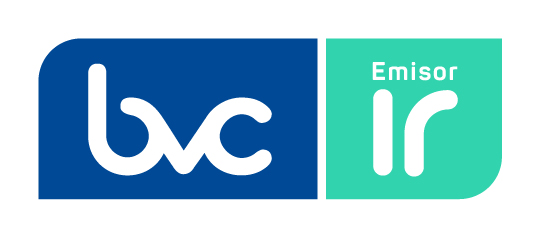Businesses that Challenge Us
Transmission & distribution
We ensure the transmission and distribution of the energy we generate. In this way, we guarantee service with continuity and quality for our clients.

GRI (103-1) Energy is an essential service, and the energy transmission and distribution infrastructure that we have at Celsia allows us to ensure delivery to end clients, guaranteeing the continuity and quality of the service, under continuous-improvement criteria that allow us to satisfy our Stakeholders, while contributing to the Company’s sustainability and profitability. Our daily objective is to operate the electrical infrastructure with technology and efficiency to achieve operational excellence and, thus, comply with the service-quality indicators that characterize us, with the best practices in the sector.
GRI (103-2)
- We make investments in new Infrastructure and the replacement of obsolete infrastructure to ensure good rates of quality and service continuity for the end client.
- We manage assets and risks according to the Company’s Strategic and Operational Risks, which allows us to reduce impacts and, thus, improve business efficiency and profitability to achieve compliance with our MEGA.
- We carry out technological and prospective surveillance of the business to modernize and improve efficiency, availability, quality and innovate in the network and its related services.
- We analyze the new sector trends to deliver the energy that our clients want through the development of smart grids, microgrids, distributed generation and other technological advances that are taking place nationally and internationally.
We built and commissioned our first digital-energy substation, Vijes 115 kV, located in Valle del Cauca, Colombia, with which the energy availability or capacity was increased by 25 MVA to meet the increased demand or population and economic growth of the municipalities of Vijes and Restrepo, and the town of Rozo, in Palmira.
Clients
Transformers and Substations
Transmission
(DJSI: 2.7.1) (GRI: EU4) (SASB: IF-EU-000.C)
Transmission Valle
|
Length of Transmission Network
|
Unit of Measurement
|
2018
|
2019
|
2020
|
2021
|
|---|---|---|---|---|---|
|
Average length of the transmission network
|
Km
|
285.33
|
274
|
274
|
274
|
|
Total length of the transmission network (≥220 kV)
|
Km
|
291
|
274
|
274
|
274
|
Transmission Central America
|
Length of Transmission Network
|
Unit of Measurement
|
2019
|
2020
|
2021
|
|---|---|---|---|---|
|
Total length of the transmission network (≥220 kV)
|
Km
|
17
|
17
|
17
|
- At CETSA, we do not have networks connected to the National Transmission System (NTS) or to the Regional Transmission System (RTS).
- In Tolima, we do not have transmission networks connected to the National Transmission System (NTS)
Distribution
Technical Losses
Technical losses are inherent to service provision; they are primarily due to the heating that occurs when the electrical energy passes through the transmission lines and transformers.
Total Losses
The total loss indicator (TLI) measures the integrated loss level from the 115 kV level. Total losses correspond to the total energy lost due to the effect of technical and non-technical energy losses, the latter representing the energy lost due to improper handling of equipment or billing systems.
System Reliability
Our efforts are focused on strengthening our network and the improvement and performance of our assets, so that clients have a reliable, continuous energy service.
SAIFI, SAIDI and CAIDI Indicators
SAIFI
The System Average Interruption Frequency Index (SAIFI) measures the frequency of power-service interruptions; that is, the amount of suspensions.
SAIDI
The System Average Interruption Duration Index (SAIDI) measures the duration of the energy-service interruptions.
CAIDI
(SASB: IF-EU-550a.2) Since 2021, we began to measure the Customer Average Interruption Duration Index (CAIDI), which represents the average time necessary to re-establish service once an interruption has occurred.
Customer Average Interruption Duration Index (CAIDI) in 2021
1.487
CAIDI
Valle
1.629
CAIDI
Tolima
0.834
CAIDI
Cetsa
Through the Advanced Metering Infrastructuring (AMI) Project, and as part of our plan to reduce losses, in Colombia we installed 65,000 smart meters, in Valle and Tolima.
We achieved a total of 251,433 meters in Valle and 36,430 meters in Tolima.
What is a smart meter? It is the latest technology available, which allows us to not only have a more-accurate record of client consumption, but also drives us to develop new products and services to make the most of the information that is beginning to be collected through these new devices.
Benefits for our clients:
- They will have a more-accurate measurement of their energy consumption.
- The meters allow remote reading and suspension; if the service is suspended and the system registers a payment, we can remotely reconnect it in less time.
- We will be able to detect any damage that occurs in the network in less time, which means that we will be able to attend to it more quickly.
- They will show an improvement in the quality of the service, since – in the areas where we have this technology – we have previously carried out a remodeling of medium- and low-voltage networks.
As of 2021, 9.0% of the measurement devices we use are smart meters.
Figure updated in July following a recalculation and external verification process.
Percentage of Energy Attended in MWh 2021
Percentage of consumption of smart meters in the distribution network for the regulated market.
18.661%
Colombia
N/A
Central America
11. 157%
Total Celsia
Energy Attended in MWh 2021
Consumption of smart meters in the distribution network for the regulated market.
405,620 MWh
Colombia
N/A
Central America
405,620 MWh
Total Celsia
TCFD (Strategy – b) Aware of the importance of climate change in all our businesses, we have identified new Risks that may impact some important aspects in the expansion and operation of the network, including:
- Alteration in the quality of service to our clients, due to heavy rains and strong winds.
- Affection in the stability of the transmission and distribution structures, due to the increase and severity of extreme phenomena, such as tropical cyclones.
- Impact on electrical substations, due to sea-level rise and flooding.
However, we also find opportunities and have seen positive results in the initiatives implemented, thanks to the anticipation that has been taken, driven by climate change; for example, energy-efficiency solutions and demand management.
For the efficient-consumption product, frames within the Demand Response initiatives, there was a savings of 122.5 MWh, representing a reduction of 321.5 TonCO2, while with the AMI smart meters, the reduction was 1,731 TonCO2.
The investments made in Infrastructure and the new way of remunerating the assets by the regulator showed a growth of 11%, compared to the income of the previous year.
Investments for COP 369.308 billion were made – 7.16% above the investments of the previous year – to comply with the projects defined by the Colombian Energy and Gas Regulation Commission (CREG, in Spanish) Resolution 015 of 2018, which allowed maintaining the quality indicators and losses in optimal values.
During 2021, the results of the indicators were as follows:
Total Loss Reduction Plan:
- Celsia Colombia Valle presented an indicator of 9.69%, deviating 0.3% from the expected goal (9.39%).
- Celsia Colombia Tolima presented an indicator of 13.44%, surpassing the expected goal by 1.79% (15.22%)
Quality Plan (SAIDI)
- Celsia Colombia Valle presented an indicator of 9.35 hours, improving the regulator-approved goal of 11.51 hours.
- CCelsia Colombia Tolima presented an indicator of 43.50 hours, improving the regulator-approved goal of 63.19 hours.
- CETSA presented an indicator of 1.61 hours, improving the regulator-approved goal of 2.44 hours.
We obtained excellent results in the transformers impacted by the OPTIMUS Project, which improved their quality indices by up to 21%. The OPTIMUS Project allows us to know in real time information about faults in the Company’s distribution transformers without relying on client calls, using sensors in the secondary outputs of the distribution transformers.
Investment in T&D Innovation in 2021:
- We continued advancing in the modernization of our infrastructure in the conformation of smart networks, having the AMI measurement as the spearhead of this transformation, which presented a growth of 65,000 clients, already reaching a cumulative figure of 287,863 clients with an investment of COP 31.075 billion.
- The Digital Network Project made investments worth COP 29.599 billion, where it has been possible to promote R&D+I for the digital transformation of the network and a regulatory sandbox for demand response, providing good practices and technology benchmarks.
- We strengthened alliances with various suppliers and academic through different initiatives with the Universidad del Valle, the National University, and allies, such as IGT, Micol, PTI, Metrum, Colombia Inteligente, where capacity building has also been encouraged through the participation in collaboration groups and energy clusters.
- We managed resources with IFC and EPRI, which will allow us to promote the digital transformation of the network.
- We developed skills and learning for electrical-storage solutions and connection to the distribution network, with an alliance with Terna, CESI and C3, companies that are experts in these technical issues.
Recognitions
ISO 55001:2014 Certificate of Asset Management, management of assets required for energy transmission and distribution and for farms, and photovoltaic rooves in Valle del Cauca and Tolima.
The Colombian Ministry of Science, Technology and Innovation, for the RDDDA 1869 Project of December 30, 202, with recognition for 2021, amounting to COP 29,599,358,025.
With this Project, we seek the digital transformation to enable a digitized, distributed, democratic and autonomous network in the Departments of Valle del Cauca and Tolima.
New Challenges
These are our short-, medium- and long-term challenges:
- Make investments for more than COP 788 billion in projects that allow improving service-quality indices, expanding coverage and reducing the level of energy losses, in order to surpass regulatory goals.
- Put Toluviejo 230 kV into commercial operation for the first half of 2023 and the Estambul 115 kV substation.
- Participate in summons that allow new growth opportunities in the transmission and distribution business.
- The Sahagún 500 kV substation with commissioning in the second half of 2022.
- The Estambul STN 230 kV substation.
- Achieve an improvement in the quality of the SAIDI and SAIFI service by implementing a technological infrastructure in Valle and Tolima, which allows us to operate the network autonomously.
- Design and implement the pilot of a new distribution-system operator (DSO), which guarantees the efficient, safe operation of the distribution system.
- Develop models and algorithms for data analytics and artificial intelligence for the operation, based on information from the new measurement sensors, level of losses, location and operating conditions of the digital network.
- Make investments for more than COP 800 billion in projects that allow improving service-quality indices, expanding coverage and reducing the level of energy losses, in order to surpass regulatory goals.
- Implement new information and communication technologies in substations and networks to support the network transformation toward the digital, which will allow the democratization and opening of new sources of distributed generation, storage, aligned with the expected increase in consumption.
- Reduce the value paid for compensation for quality of service, due to the implementation of the operation of an autonomous network that will reduce the times of restoration and replacement of failures.
- Commission the following:
- The Pacífico 230 kV Substation
- Las Palmas 115 kV Substation and 115/34 kV Transformation
- The Escobal 115 kV Substation
- The Perales 115 kV Substation
According to the planning horizons provided by the Mining – Energy Planning Unit (UPME, in Spanish), at Celsia we have 25 works planned in the NTS and the RTS in order to increase the reliability of the service in the Departments of Valle del Cauca and Tolima, as well as allow the connection of large consumers, large generation projects and the organic growth of demand, among which are:
- The Alférez II (115-k]) Substation
- The Zarzal II (500/220/115[k]) Substation
- The Tuluá II (220/115[k]) Substation
- The expansion of the Cerrito Substation Cerrito (220 kV).
- FACTS installation at the Cajamarca 115-kV Substation – Phase I
- The Flandes – Gualanday 2 115-kV Second Circuit
- The San Felipe – Victoria 115-kV (proposed by the Caldas Hydroelectric Power Plant, CHEC, in Spanish).
- The Tuluní - Natagaima 115-kV Second Circuit
- Opening of the Prado – Tenay 115-kV Circuit to connect it to the Natagaima 115 kV Substation
- The Salado – San Felipe 220-kV Line
Glossary:
CREG: The Colombian Energy and Gas Regulation Commission
Demand Management: A set of actions designed to manage and optimize the energy consumption of a specific point in order to reduce costs, such as network charges or general system charges, including taxes.
Demand response: It enables commercial and industrial consumers to respond to market signals by increasing or reducing their energy consumption.
MEGA: Large and Ambitious Goal (Meta Grande y Ambiciosa) that provides strategic guidelines to the Organization.
National Transmission System (NTS): The interconnected electrical energy-transmission system made up of the set of lines with their corresponding connection modules, which operate at voltages equal to or greater than 220 kV.
RDDDA (in Spanish): The Digitalized, Distributed, Democratized and Autonomous Network
Regional Transmission System (RTS): The interconnected electrical energy-transmission system composed of regional or interregional transmission networks; also, it is made up of the set of lines and substations with their associated equipment, which operate at voltages of less than 220 kV and do not belong to a local distribution system.
SAIDI (The System Average Interruption Duration Index): A quality indicator that measures the average duration of System Interruption.
SAIFI (System Average Interruption Frequency Index): A quality indicator that measures the average interruption frequency of the system.
Smart Meters (AMI): Advanced metering infrastructure (AMI). It allows us not only to have a more-accurate record of client consumption, but also encourages us to develop new products and services to make the most of the information we begin to collect through these new teams.







